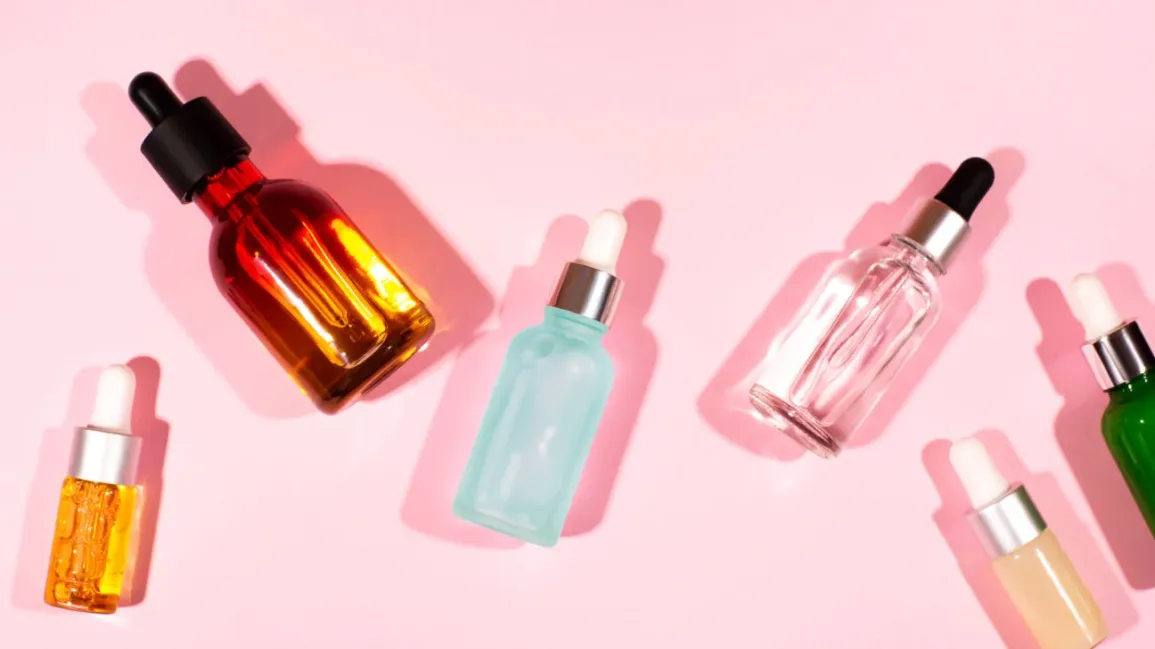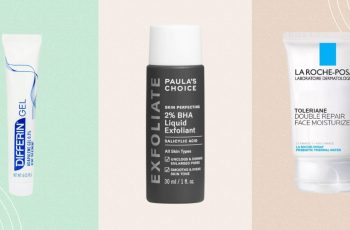Why Your Natural Deodorant Isn’t Working?
You made a conscious decision to switch up your deodorant and opt for a natural one. But you’re surprised to find that it doesn’t work and doesn’t produce the results you were hoping for. Here are some tips to make sure your natural deodorant works for you.
Detox Your Armpits
This may be one of the weirdest things you’ll ever do in your life, but in order to get the best results from your natural deodorant, you need to detox your underarms. This can take up to 1-2 weeks. Transitioning from traditional to natural deodorant requires this time to allow the skin to clear out all the chemicals and toxins that were previously trapped in the body. It’s completely normal to notice more sweat and odor initially, and after the detox you’ll find your body naturally balances out. Then you can use your natural deodorant with confidence that it will keep you dry and smelling great!
Use the Right Amount
Goldilocks had it right: not too much, not too little, just right! Since natural deodorants have a slight stigma about not working properly, you may be tempted to use too much product. This can actually have a negative impact on you because the excess product won’t be absorbed well and will remain on the skin, causing the bacteria in your armpits to react and ultimately give off an odor. Follow the instructions on the label regarding the best amount to use and you’ll be totally fine!
Application of Deodorant Cream
Natural deodorants are great, healthy to use, and they work great, but they require more work than just a quick wipe and wipe. After showering, make sure your armpits are completely dry. Residual moisture and damp skin can affect the absorption of the product into your skin, so it won’t work for you in the end! It may be a little irritating, but rubbing the product into your underarms until it’s fully absorbed can also increase the effectiveness of your deodorant! Don’t forget to wash your hands after using the product to prevent bacteria and dirt from getting into the jar!
Rotate
Understandably, it may seem like a waste of time, but switching up your natural deodorant will benefit you in the long run. With natural products like essential oils, your skin will most likely get used to the ingredients, so your natural deodorant won’t work as well anymore. For example, if you use two deodorants with different ingredients, make sure they are effective and that your skin isn’t “used to” the products.
Wear natural fibers
Another reason why deodorant doesn’t work could be the clothes you wear. Maybe you haven’t thought about it, but our armpits are constantly in contact with the fabric of the clothes we wear. Not surprisingly, the natural fibers in your tops can actually cause you to sweat more, so your deodorant won’t work as intended. When you wear natural fibers like cotton, your skin can breathe, so you won’t sweat as much! If you don’t want to wear clothes made of natural fibers, choose loose-fitting tops, especially around your arms and armpits.
Lifestyle
Whether it’s panic before an important meeting or nervousness on a first date, all of these lifestyle factors can cause natural deodorant to not work as well as it should. This is completely normal and can’t be changed or stopped. But there are things you can do to help if you need to. For example, carry deodorant with you and reapply whenever possible. Don’t forget to wash your armpits to best prevent sweating. You can also bring a replacement top or even perfume to mask any odor.
Skin sensitivity
Natural deodorants are undoubtedly the best choice for underarm use, but some people experience skin sensitivity due to the baking soda in the product. This could be because you applied deodorant shortly after shaving and got razor burn! Waiting about 10 minutes after shaving and applying deodorant can prevent this from happening. This gives your skin time to calm down naturally without causing any irritation and skin sensitivity.
Your DNA
You found a natural deodorant that you absolutely love, but you realize that you don’t like it very much. This could be due to the ingredients and essential oils it contains. These are great deodorants, but the problem is that your body doesn’t react well to them. For example, lavender might be one of your favorite scents, but unfortunately it doesn’t work for your body! Instead, try some other products with different essential oils and ingredients. You will undoubtedly find one that works better for your body.
Your Diet
The last reason why deodorant doesn’t work could be a change in your eating habits. Foods like curry and garlic are very strong in smell and can give off a smell after sweating. If you’ve noticed this and you’ve been eating a lot of these foods lately, this could be the reason why your deodorant doesn’t work.
Here are some reasons why natural deodorants don’t work. We hope that some tips and tricks can help you solve any problems you might have.
DQH Can I use salicylic acid first and then vitamin C?
It’s easy to create a skincare routine, but knowing how to use it is another thing entirely. In most cases, if you’re not getting the desired skin results, it could be due to the layering of conflicting ingredients. So, is it possible that salicylic acid and vitamin C are such ingredients? Or are these active ingredients the duo that’s been missing from your skincare routine? If you want answers, stick around because today we are going to explain the benefits of salicylic acid and vitamin C and how they can be used in your daily life.
What are the benefits of salicylic acid for skin?
Salicylic acid is one of the most commonly used beta hydroxy acids and is favored by many people with oily, acne-prone skin. This acid is derived from willow bark, and unlike its water-soluble relatives (called alpha-hydroxy acids), salicylic acid is oil-soluble, which means it can penetrate deeper into the lower layers of the skin. Once it reaches the lower layers, it can help unclog pores of excess sebum, dirt, bacteria, debris, and impurities. This results in clearer skin tones and greater definition.
Not only does salicylic acid benefit the underlying layers, but the outer surface of the skin benefits as well. When applied to the skin, salicylic acid removes the buildup of dead skin cells. This is accomplished by breaking the bonds that hold dead cells to the surface. Over time, this can cause the complexion to look dull and prone to acne, blackheads, and other blemishes.
If you’d like to learn more about salicylic acid and how it can improve your skin, check out this dedicated blog post from a beauty insider.
What are the benefits of vitamin C for skin?
Vitamin C is considered one of the most powerful antioxidants, which means it is very effective at fighting free radicals and preventing them from causing further skin damage. Examples of free radicals include pollution, central heating, UV rays and harsh climate. They attack proteins, fats and cell membranes as soon as they come into contact with the skin, causing signs of premature aging such as fine lines and wrinkles as well as hyperpigmentation, flaky patches of skin and loss of elasticity.
Many people usually prefer to use vitamin C in their morning routine as this ingredient gives the complexion a radiant glow. You’ll also find that vitamin C can target areas of hyperpigmentation, plumping the skin and reducing the appearance of fine lines and wrinkles.
The thing about vitamin C is that there are a lot of outdated studies going back to the 1950s that describe vitamin C as an unstable skin component. Thanks to improvements in modern technology, this is no longer the case as all products now contain a stable form of vitamin C.
Visit The Beauty Insider to learn more about vitamin C. So please check out our blog post.
Can I use salicylic acid first and then vitamin C?
Yes, you absolutely can. In fact, it’s thought that using salicylic acid before using vitamin C ensures it penetrates faster and works faster.
This is an efficient way to utilize two power sources, and the reason has to do with pH. For example, the skin’s natural pH is about 4.7, making it slightly acidic. Salicylic acid and vitamin C are also both acidic, and you’ll find that vitamin C is absorbed quickly into the skin. Therefore, using salicylic acid beforehand can increase the acidity of the skin and allow vitamin C to penetrate into the skin faster.
While this is considered an effective way to combine two powerful ingredients, you need to be aware of your skin type and how it reacts to certain active ingredients. Even people with perfect, normal skin can experience skin sensitivity and irritation. Therefore, always consult a doctor or dermatologist before using any new products on your skin.
It’s also important to follow skin application rules. In this case, you need to use the product correctly to ensure you get the best results for your skin. If you’re not sure what I mean, the basic rule for skin is to start with the thinnest consistency and work your way up to the thickest consistency. This prevents a barrier from forming on the surface, preventing other active ingredients from penetrating the skin.
Can I use salicylic acid at night and vitamin C in the morning?
Yes, absolutely, this is considered the most effective way to get returns without any adverse side effects. This is because there is enough time between applications to ensure that the skin’s pH levels return to balance.
You’ll also find that Vitamin C is rich in antioxidants and is perfect for use in the morning to ensure your skin is protected and looking its healthiest. Due to the small size of salicylic acid molecules, it is an acid that is able to reach the deepest parts of the skin. While this is effective at keeping skin clear, it also increases the risk of irritation and photosensitivity. Therefore, many people prefer to use powerful BHAs in their evening routine without exposure to UV rays, pollution, or harsh weather.
Warning: If you avoid using sunscreen every day, none of these ingredients will do what your skin needs. The combination of chemical peels and powerful ingredients increases the risk of further damage to the skin’s surface. Use SPF 50 every day to keep your skin protected and your lipid barrier healthy, even on cloudy days, keeping your skin in top condition.



